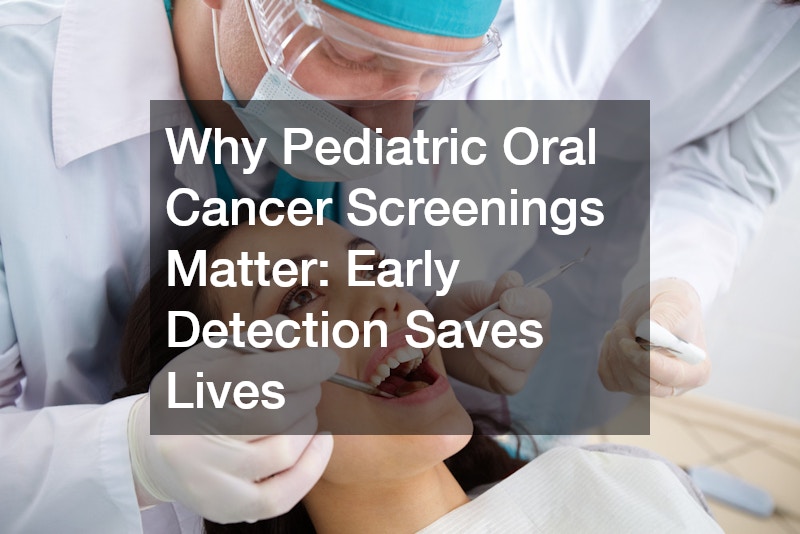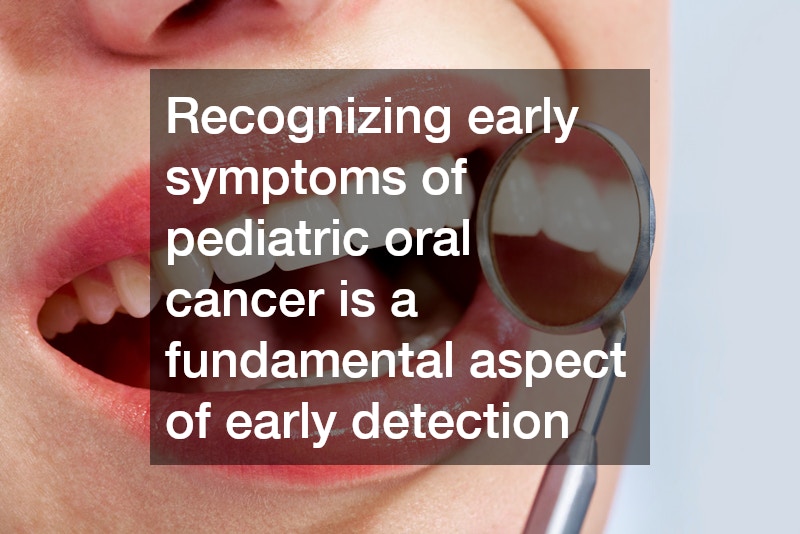
Why Pediatric Oral Cancer Screenings Matter Early Detection Saves Lives
Disclaimer: The material provided is designed to inform readers about oral health and preventive care. It should not be considered medical advice. Consult a registered dentist for guidance specific to your oral health needs.
Why Pediatric Oral Cancer Screenings Matter: Early Detection Saves Lives
Introduction
Understanding the importance of pediatric oral cancer screenings is vital for ensuring the health and safety of children. Early detection can significantly improve the outcome, and this article aims to address why these screenings are crucial, explore the common queries parents have, and provide a comprehensive overview of the topic.
What is Pediatric Oral Cancer and How Common is it?
Pediatric oral cancer, though relatively rare, is a critical condition to be aware of, involving malignancies found within the oral cavity that predominantly affect the soft tissue and occasionally the hard tissue. While not as prevalent as other pediatric cancers, its impact can be significantly detrimental if not identified and treated early.
According to certain statistical analyses, the incidence is not alarmingly high compared to adult oral cancer; however, the rarity doesn’t lessen its potential seriousness.
Consistency in monitoring and vigilance regarding any unusual developments within a child’s oral region is essential. It’s important to differentiate between benign conditions and those signaling a more serious underlying issue, such as oral cancer. Understanding how pediatric oral cancer presents differently from dental issues or benign growths is crucial for correct diagnosis and treatment. Discussions around this topic raise awareness and emphasize the rarity yet critical nature of these screenings.
Moreover, while the conversation surrounding pediatric oral cancer might not make headlines due to its uncommon nature, its impact on affected families is deeply profound. Often developing without noticeable symptoms until advanced stages, oral cancer in children necessitates early intervention for effective treatment. Encouraging routine screenings despite the infrequency of incidences ensures that medical professionals remain vigilant in spotting early-stage indicators, thereby improving prognosis significantly.
What are the Early Signs and Symptoms to Look Out For?
Recognizing early symptoms of pediatric oral cancer is a fundamental aspect of early detection. Common early signs can include persistent mouth sores, bleeding, or lumps inside the mouth that do not heal. While these may occur due to other, less serious reasons, the persistence and unexplainable nature of these symptoms warrant professional evaluation. In some cases, children may experience difficulty in chewing or swallowing, which may also indicate possible underlying issues.
Furthermore, unexplained weight loss and chronic fatigue can provide indirect signs pointing towards concerns that require further medical investigation. Not all symptoms directly link to oral cancer, hence understanding the holistic picture of a child’s health is vital. Regular dental check-ups, during which comprehensive oral exams are conducted, help spot abnormalities early. Parents should be informed of these potential signs, as their observations are crucial in prompting timely visits to healthcare providers.
On a preventative note, educating both children and parents about the importance of maintaining good oral hygiene and understanding the implications of unusual oral changes can make a significant difference in outcomes. Establishing a routine that includes looking for changes in the oral cavity not only promotes oral health but also empowers parents and children alike to actively participate in health vigilance. Empowered with this knowledge, families contribute more effectively to early cancer detection strategies.
How are Pediatric Oral Cancer Screenings Conducted?
The process of conducting oral cancer screenings in children is designed to be as non-invasive and straightforward as possible. It typically involves a visual and physical examination of the oral cavity by a healthcare professional, usually a pediatric dentist or a general dentist trained in identifying potential cancerous lesions. During these examinations, professionals look for irregularities such as sores, discolored tissues, or mass formations that could indicate early signs of cancer.
Advanced tools such as special lights or dyes may be used to highlight abnormal tissues more clearly, improving the accuracy of screenings. These tools are safe and help in identifying any suspicious areas that might require further investigation via biopsy or imaging techniques. Professionals involved in these screenings are adept at discerning between benign conditions and potential malignancies. For parents, understanding what a typical screening involves can alleviate concerns and foster cooperation with healthcare providers.
Furthermore, comprehensive screening doesn’t just focus on the physical observation but also involves taking into account the child’s health history, lifestyle, and any genetic predispositions. Collaborative care approaches emphasize the involvement of a multidisciplinary team to ensure any unusual findings are promptly and accurately addressed. With such measures in place, the collective goal remains to provide effective, early solutions to ensure that any emergence of pediatric oral cancer is tackled at the earliest possible stage, maximizing treatment success and quality of life for affected children.
Conclusion
Concluding with a summary of the importance of early pediatric oral cancer screenings, the article will reiterate that vigilance and timely healthcare consultations can drastically improve the treatment outcomes and quality of life for children diagnosed with this condition. Persistent education and awareness among parents and healthcare providers remain pivotal in ensuring that children receive the best possible care. It is through these screenings that potentially life-saving early detections are made possible, offering children the chance to overcome the challenges posed by such conditions and lead healthy, fulfilling lives.




